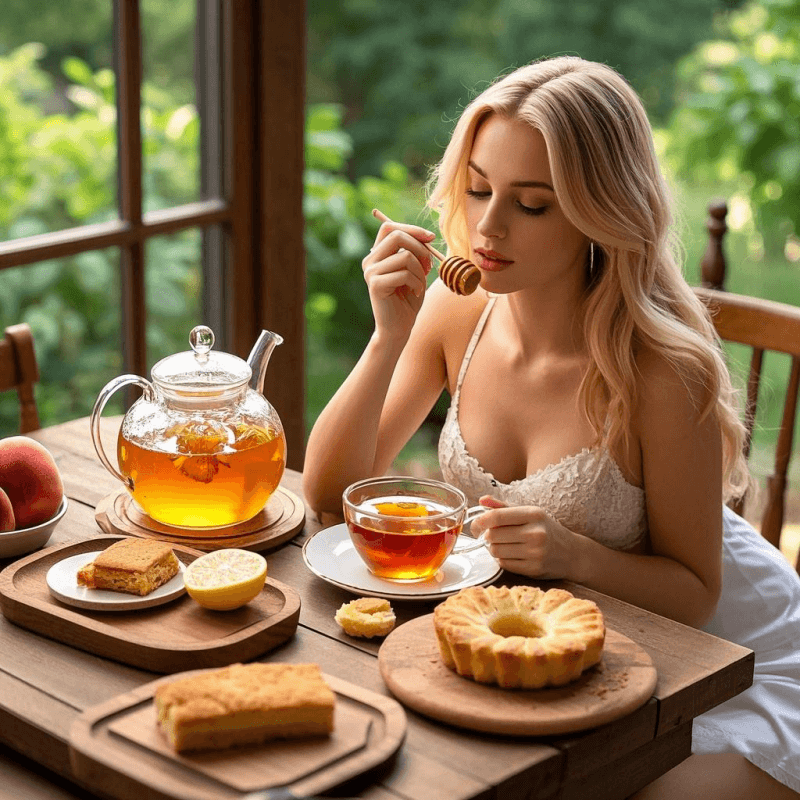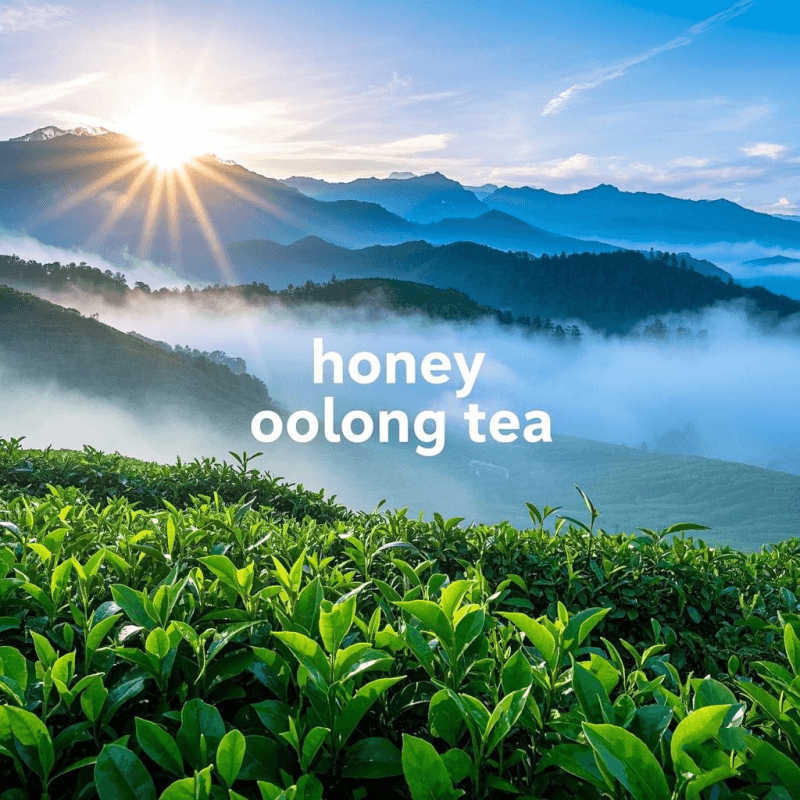1. Introduction: Why Honey Oolong Tea Deserves a Spot in Your Cupboard

In a world of fleeting tea trends, honey oolong tea stands out as a timeless favorite—and for good reason. This aromatic brew marries the complexity of oolong tea with a natural sweetness that feels both indulgent and refreshing, making it a versatile companion for meals, snacks, and quiet moments alike. A 2024 survey by Tea Trends Report found that 68% of tea enthusiasts cite “unique aroma” as their top reason for choosing honey oolong, while 53% specifically seek it out for pairing with food. Its ability to balance floral brightness, subtle sweetness, and gentle depth sets it apart from other teas, turning ordinary sips into memorable experiences. Whether you’re a seasoned tea lover or new to the world of oolong tea, understanding how to pair honey oolong tea unlocks a world of flavor harmony.
2. Where Does Honey Oolong Tea Get Its Unique Aroma?
The signature scent of honey oolong tea isn’t an accident—it’s the result of careful cultivation, oxidation, and processing that honors centuries of tea craftsmanship.
🌱 Terroir: The Mountain Influence
Most premium honey oolong tea hails from high-altitude regions like Taiwan’s Alishan Mountains or China’s Fujian Province, where thin air, cool mists, and mineral-rich soil slow growth. This stress on the tea bushes concentrates aromatic compounds: linalool (responsible for floral notes) and phenylethanol (which mimics honey’s sweetness) are 30% more abundant in mountain-grown leaves, according to a study in Journal of Food Science.
🍯 Oxidation: A Delicate Balance
Unlike heavily oxidized black teas or lightly oxidized greens, honey oolong tea undergoes 30–40% oxidation. This “sweet spot” allows enzymes in the leaves to break down chlorophyll (reducing grassiness) while preserving volatile oils that create honeyed aromas. During rolling and drying, these oils bind with natural sugars in the leaves, intensifying the tea’s signature scent.
✨ Minimal Processing: Letting Nature Shine
Artisanal producers avoid artificial flavorings, relying instead on hand-picking (only young buds and top leaves) and sun-drying to enhance natural sweetness. This commitment to purity ensures the aroma of honey oolong tea remains bright, complex, and true to its origins.
3. Flavor Breakdown: From Floral Tops to Roasty Undertones
Honey oolong tea unfolds in layers, each sip revealing new nuances. Understanding these layers helps elevate pairings:
🌸 Top Notes: Bright Florals & Fresh Fruit
The first whiff (and sip) delivers jasmine, orchid, and fresh pear—thanks to high levels of geraniol, a compound found in roses and citrus. These bright notes are delicate, easily overpowered by heavy foods, so pair them with light flavors to let them shine.
🍯 Mid Notes: Luscious Honey & Cream
As the tea lingers on the palate, natural sugars (fructose and glucose) from the leaves take center stage, mimicking raw honey’s warmth. This sweetness is rounded, not cloying, balanced by a subtle buttery mouthfeel from the tea’s natural oils—similar to how whole milk softens coffee, but inherent to the leaf itself.
🌰 Base Notes: Subtle Roast & Mineral Depth

A gentle finish reveals hints of toasted almond or hazelnut, a result of brief roasting (common in Taiwanese honey oolong). Underpinning it all is a mineral “terroir,” a whisper of the mountain soil where the tea grew, adding complexity that makes honey oolong tea more than just a sweet drink.
As Serious Eats notes, “The best oolongs, like honey oolong, act as flavor chameleons—complementing, not competing, with food.”
4. The Best Food Pairings for Honey Oolong Tea
🍪 Desserts & Pastries: Complementing Sweetness
- Light Cookies: Almond shortbread, butter cookies, or shortbread. Their buttery richness mirrors the tea’s mid notes, while the tea’s floral tops cut through sweetness.
- Fruity Treats: Pear tart, white peach sorbet, or honey-glazed figs. The tea’s pear and honey flavors harmonize with fresh fruit, creating a summer-inspired duet.
- Not-Too-Sweet Cakes: Angel food cake, lemon pound cake, or honey sponge cake. These desserts let the tea’s natural sweetness shine without overwhelming it.
🥢 Savory Snacks: Cutting Richness
- Nuts & Seeds: Roasted cashews, honey-glazed almonds, or sesame crackers. The tea’s brightness balances salt, while its nutty base notes echo the snacks’ flavors.
- Soft Cheeses: Brie, camembert, or goat cheese. The tea’s creaminess complements the cheese’s tang, while floral notes refresh the palate between bites.
- Lightly Fried Foods: Tempura vegetables, spring rolls, or coconut shrimp. The tea’s sweetness and acidity counteract oil, preventing heaviness.
🍚 Main Dishes: Elevating Meals
- Asian-Inspired: Steamed fish (white fish like cod or snapper), chicken and ginger stir-fry, or jasmine rice with scallions. The tea’s mineral depth pairs with umami, while its brightness cuts through soy or oyster sauce.
- Western Fare: Herb-roasted chicken, honey-glazed ham, or grilled pork tenderloin. The tea’s honey notes mirror the meat’s sweetness, while floral tops add a surprising contrast.
5. Tea & Food Pairing Traditions Around the World
🍵 Chinese “Cha Can” (Tea Snacks)
In Fujian, locals pair honey oolong tea with “xian bing” (salty sesame cakes) or “dou sha bao” (red bean buns). The contrast—tea’s sweetness with savory or mildly sweet snacks—follows the principle of “yin yang” balance: hot (tea) with cold (pastry), sweet with salty.
🍡 Japanese “Wagashi” & Tea
While Japan is known for matcha, oolong tea (called “uruoru cha”) pairs beautifully with “yokan” (sweet red bean jelly) or “daifuku” (mochi with fruit filling). The goal? “Harmony,” where the tea cleanses the palate between bites of dense wagashi.
☕ Western Afternoon Tea
In Britain, honey oolong has replaced traditional black tea in modern afternoon spreads, paired with cucumber sandwiches, smoked salmon canapés, and fruit scones with clotted cream. The tea’s lightness makes it ideal for multi-course tastings, where heavy black tea might overwhelm.
6. Brewing Tips to Maximize Honey Oolong Tea’s Aroma
Great pairings start with great tea. Follow these steps to unlock honey oolong tea’s full potential:
🌡️ Water Temperature & Steeping Time
- Use 175–185°F (80–85°C) water—hot enough to extract flavor, not hot enough to burn delicate compounds (boiling water kills floral notes).
- Steep 3–4 minutes for loose leaves (5g per 8oz water). Over-steeping brings out bitter tannins, overpowering honey sweetness.
🍵 (Teaware Matters)
- Porcelain or Glass: These materials don’t absorb flavors, preserving the tea’s aroma. A glass teapot lets you watch leaves unfurl—a visual bonus.
- Small Cups: Sipping from small, narrow cups concentrates aroma, making each sip more fragrant.
💧 Water Quality
Use filtered or spring water. Hard tap water (high in calcium) can dull the tea’s brightness, while distilled water lacks minerals to enhance flavor.
🔄 Re-Steeping for Variety
Honey oolong leaves can be steeped 3–5 times. Later steeps (5–7 minutes) reveal deeper roast notes, perfect for pairing with richer foods like dark chocolate or roasted meats.
7. Conclusion: Savoring Honey Oolong Tea Through Perfect Pairings
Honey oolong tea is a masterpiece of balance—floral yet rich, sweet yet complex—and its true magic shines when paired with food that honors these qualities. Whether you’re enjoying it with a buttery scone, steamed fish, or a simple handful of nuts, the right pairing elevates both the tea and the dish, creating moments of flavor harmony.
Brewing it well is key, but so is curiosity—experiment with different pairings to find what delights your palate. Try our premium honey oolong tea for a naturally sweet experience and start your own pairing journey. After all, the best tea moments aren’t just about the cup—they’re about the stories, the food, and the joy of savoring each sip.
Discover how to pair honey oolong tea for maximum flavor. This guide explores its floral-sweet notes, best food matches, and brewing tips. Elevate your oolong tea experience today!
